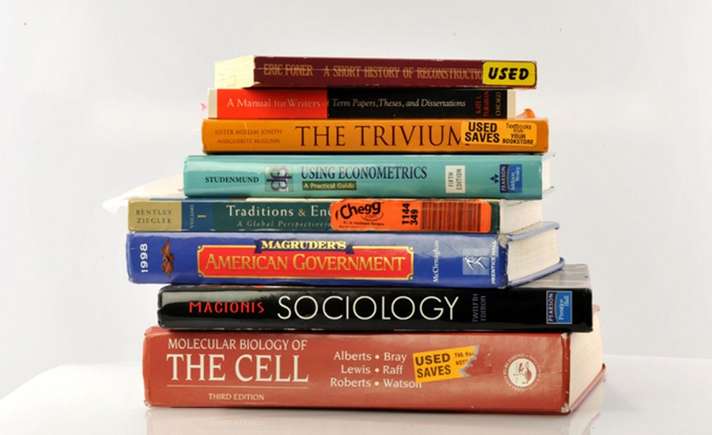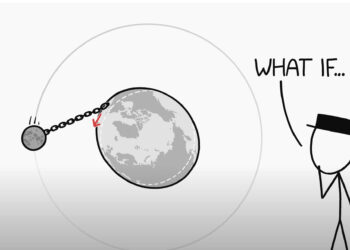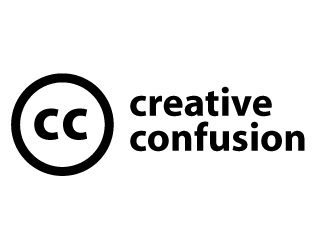 Some Scholarly Kitchen readers will be familiar with Boundless, a company that was founded in 2011 with a very interesting modus operandi: it would take freely-available information from the open Web and arrange it in formats that mirrored the layout and pagination of popular (and usually very expensive) academic course texts. So the idea was that if your professor required you to buy a $200 introductory physics text, a Boundless version of that text would provide the same information (phrased differently, of course, since it came from other sources) illustrated by similar (though not identical) figures and photographs, on the same pages. If your professor assigned you to read chapter 3 of the expensive textbook before the next class period, you could instead read chapter 3 of the free Boundless version and get a different expression of the same information.
Some Scholarly Kitchen readers will be familiar with Boundless, a company that was founded in 2011 with a very interesting modus operandi: it would take freely-available information from the open Web and arrange it in formats that mirrored the layout and pagination of popular (and usually very expensive) academic course texts. So the idea was that if your professor required you to buy a $200 introductory physics text, a Boundless version of that text would provide the same information (phrased differently, of course, since it came from other sources) illustrated by similar (though not identical) figures and photographs, on the same pages. If your professor assigned you to read chapter 3 of the expensive textbook before the next class period, you could instead read chapter 3 of the free Boundless version and get a different expression of the same information.
Since you can’t copyright either an idea or, generally speaking, the order in which ideas are presented, Boundless apparently believed that it was operating comfortably within the law. Textbook publishers—unsurprisingly enough—felt differently, and in 2012 the company was sued by Pearson Education, Cengage Learning, and Macmillan Higher Education. These companies charged that by copying “the distinctive selection, arrangement, and presentation” of their textbooks, “along with other original text, imagery, and protected expression of Plaintiffs and their authors,” Boundless was in fact in violation of copyright law.
To illustrate the principles at issue here: I can’t copyright the phrase “a recursion is any kind of inductive definition.” However, if I write a lengthy explanation of that mathematical principle, using my own words, I can claim copyright in the explanation. Boundless’ business model was founded on the belief that a differently-worded explanation of the same principle would not constitute a copyright infringement, since it’s the explanation that is protected by copyright, not the principle itself; the plaintiffs’ lawsuit was built on the belief that even if the expression of each idea is different, duplicating their systematic presentation of a progression of ideas and replicating the look and feel of that presentation did constitute a copyright infringement.
Had the lawsuit gone to trial, it would have been a very interesting moment in the history of copyright law and would likely have helped settle some vexing questions—notable among them the question of when and whether one presentation of factual information can be considered duplicative or derivative of another one under copyright law.
But the lawsuit was settled out of court. According to one published report, the settlement included Boundless’ agreement to
stop marketing its books as “Boundless versions” or “copies” of their textbooks. Second, the company would stop “aligning” its products to the ones it hopes to replace without permission and stop using the plaintiffs’ book images in its own marketing materials without permission. And it would pay the plaintiffs $200,000 apiece.
If you go to Boundless’ website today, you notice a few interesting things. First, instead of offering “Boundless Versions” of popular textbooks, they now offer “Boundless Alternatives” to them. More interestingly, these alternative versions are no longer free—they cost $19.99 apiece. In addition to these, Boundless now offers original textbooks, which are available for free. Open one up and you see some of the ways in which Boundless hopes to make its money: a pop-up window offers to help you find a tutor in the textbook’s subject via Chegg, a fee-based online tutoring-and-textbooks provider. There are also ads on many pages, though apparently one may register with Boundless at no charge and the ads go away.
A few thoughts on all of this:
First, the difference between free and $20 is a very significant one in percentage terms, but not a huge one in terms of absolute dollars—especially if you’re looking for a version of (oops, sorry, an alternative to) a $200 textbook. Boundless now offers more than 500 texts; if it is able to create a critical mass of acceptable textbook alternatives, its potential to disrupt the textbook market is considerable.
Second, the word “acceptable” in the preceding paragraph points to a reality that some may find disturbing, but is a reality nonetheless: ultimately, it doesn’t matter whether the teaching faculty find these alternative textbooks acceptable. It only matters whether the students do. If students are able to get grades that they are pleased with by using Boundless Alternatives (or Boundless Originals), and they spread the word to their peers that this works, the impact will spread quickly. This is probably an eventuality that the textbook industry should take seriously.
Third, whether Boundless is successful as a company in the long run doesn’t matter very much. What does matter is whether this model proves out in concept—meaning whether Boundless books prove popular with students. If they do, then imitators of Boundless will arise quickly, experimenting with different business models. The textbook market is under unbelievable pressure at the moment; as the father of college students I can attest to this personally. Students (and their parents) are becoming increasingly sophisticated at finding ways around buying expensive textbooks at list price, but are still feeling very resentful at what it costs to get them. This resentment represents a real, powerful, and widespread market pressure. Combine that pressure with the enormous and growing amount of free and high-quality information available on the open Web, and I believe you have the potential for major change in that marketplace.
Last, the pressure I just alluded to is given extra energy by the presence in the marketplace of people for whom the idea of paid access to scholarship is unacceptable in principle, completely beyond questions of price. Boundless may not demonstrate that money can be made offering free alternatives to pricey textbooks—but if they show that it can be done at all, even at a financial loss, there may well be people and organizations that will be willing to step up and do it without the prospect of making any money, as a labor of love and/or revolution. How many people will be willing to do that? Probably not very many. How many will it take to cause a lot of indigestion for traditional textbook publishers? That’s the interesting question.
Discussion
18 Thoughts on "Copyright and Open Textbooks: The Case of Boundless"
Interesting piece, Rick, and thanks. But I wonder about your claim here: “…[U]ltimately, it doesn’t matter whether the teaching faculty find these alternative textbooks acceptable. It only matters whether the students do.” Is that the case? Don’t teachers assign textbooks? Would teachers allow unacceptable textbooks for their courses?
Teachers do assign them, but they can’t make students buy them — and frequently, they don’t, even in the absence of alternatives such as Boundless offers.
“t doesn’t matter whether the teaching faculty find these alternative textbooks acceptable. It only matters whether the students do.” With one very significant caveat in the cases of some of the most expensive and common texts, Rick: If the faculty is selecting a text with a complete course-support back-end, particularly test banks, it isn’t going to matter that much what the student thinks, because it will be too difficult to navigate the class with an ‘alternative’. I don’t know how much the shift to adjunct instruction plays into this as well- on the one hand, giving an instructor everything they need to teach a class is attractive, especially as they’re not bearing the cost, but on the other, if you’re teaching the same class on 4 or 5 campuses, it’s probably easier to assign a boundless textbook to everyone, and write the tests and assignments yourself
If the faculty is selecting a text with a complete course-support back-end, particularly test banks, it isn’t going to matter that much what the student thinks, because it will be too difficult to navigate the class with an ‘alternative’.
That’s true, and it’s a good point. If the instructor succeeds in making it impossible to navigate the course without buying the required text, then students will be stuck with what the teacher requires. That’s still a minority use case right now, but it may become more prevalent.
I doubt that it will become more prevalent at all. Most faculty are not indifferent to student preferences. Almost certainly for a time, the large textbook publishers will attempt to ratchet up copyright protection and attack new business modest in the courts – as was the case against Boundless. But I think it is a futile strategy in the long run.
The “market” for texts, and the profits, are in the freshman/sophomore texts (volume and price). As more of these get “MOOC’ed and go global, the market changes. As the shift to competency-based education becomes more prevalent, a fixed text takes on a different value. As individuals move up the subject matter level, often a single textbook takes on a different value, particularly in STM subjects.
As was pointed out in a previous thread, these shifts may occur well beyond the current planning horizon but one which must be considered nagging at the back of the corporate mind. This leads us back to scholarly journals. Along with the change in academia with respect to degree related experiences such as traditional courses, there are those who forecast that many fiscally weaker institutions may choose to close their doors or be absorbed into a larger institution.This coupled with the decreasing number of tenure track faculty whose survival depends on pub/perish, coupled with increased collaboration suggests the possibility of an increase in quality and decrease in quantity of academic publications. This horizon may be further out than the issue of textbooks, but should be considered as a very weak signal.
In both cases, the idea of a personal digital assistant that can learn and anticipate knowledge needs, ranging from health monitoring/advice to custom assemblage of information is here today. For digital text knowledge, a simple question sends the agent across many accessible texts. And, like alternative validation of competencies, intelligent agents can scour the literature perhaps with greater accuracy than the peers in peer-reviewed journals, particularly in STM areas.
The text question is past/present focused. What is needed is a future/present analysis.
The text question is past/present focused. What is needed is a future/present analysis.
That’s what’s needed by those of us making our living in the scholcomm space, yes. But what’s needed by a student today is a solution to the problem that the student is facing right now. Future analysis doesn’t do much for her if it doesn’t help her figure out how to succeed in five classes, each of which has several required texts costing a hundred or so dollars each. What makes the Boundless model so interesting is that it has the potential to alleviate that immediate stress to some degree, regardless of its implications for the long term.
“Boundless may not demonstrate that money can be made offering free alternatives to pricey textbooks—but if they show that it can be done at all, even at a financial loss, there may well be people and organizations that will be willing to step up and do it without the prospect of making any money, as a labor of love and/or revolution. How many people will be willing to do that?”
There are alternatives already in operation, generally known as ‘Open Educational Resources’. One of the initiatives operating in the textbook market is the BC Open Textbook Project (http://open.bccampus.ca/about-2/). One illustration of a textbook available from this resource is: “Teaching in a Digital Age;” see http://opentextbc.ca/teachinginadigitalage/.
You’re certainly right that other companies are creating their own open textbooks–but that’s not quite the same thing as offering free/open versions of expensive texts that already exist. That’s the model I was suggesting could be a game-changer if other OER producers start adopting it. It’s one thing to create an open textbook that competes with an expensive one; it’s another thing to create an open version of (or “alternative to”) that very text.
Many faculty are concerned that students will opt not to buy the text that they adopt. There’s plenty of evidence that many students do skip buying the text for financial reasons. Institutions of higher education are concerned that they are pricing themselves out of their markets. State university systems are concerned that students will find more cost-effective alternatives to their constituencies.
Consequently, there is a lot of interest in open source eTextbooks. Adopting extant eTexts whole cloth, re-purposing eTexts and creating new eTexts from scratch are all being encouraged. For example, the Affordable Learning Georgia initiative in the University System of Georgia: http://www.affordablelearninggeorgia.org
… and I’m sure there are similar efforts in other states and in educational organizations looking out for the survival and prosperity of higher education.
Pearson et. al. will not be able to intimidate these efforts as it did Boundless. There’s no credible conflict with which to invoke the specter of expensive litigation.
However, textbook publishers are not without options. There is also a move to supplant textbooks entirely with “learning materials” that are silo-ed within Learning Management Systems (LMS) operated by the publisher or the institution. These schemes may also supplant the faculty adoption process by making the adoption of “learning materials” an institutional decision where the cost of those materials is bundled with course tuition. The publisher gets 100% sell-through, the institution reduces students’ total cost (and debt) and possibly gets some revenue too. Campus stores become obsolete and students have their learning materials delivered to their LMS door without the hassles of waiting for texts to become available or seeking out used books getting the right edition and so on. Faculty move yet closed to teaching assistant status.
A business is created to make money. A philanthropy is created to give away the money a business has earned.
Thus, if Boundless is losing money it will not be around too long.
Profs/grad students, adjuncts ect at the freshmen/sophomore level have to teach some 150 to 500 students. They use test banks (self grade with a computer program), overheads, e materials etc. They design their syllabi around the text. They have their notes tied to the text. They have errors that are found in the text corrected in their notes. In short, the text becomes a central part of the course. Thus, to use alternative materials can cause a student to fail a course or do poorly while accomplishing it inexpensively.
Most students both buy and sell their texts on the used market and get back around 50% of initial purchase price and pay about 75% of new.
Although there are students on residential campus who are living on ramen, the vast majority are eating well and spending their college years as we did. I have been hearing about the high cost of text books since being a traveler in 1970 when the cost of freshmen biology broke the $20 barrier. The interesting thing is that I have not heard the same complaints about the increased cost of a six pack of beer (99 cents in 1970) or the price of a cup of coffee (5 cents for a bottomless cup).
Regarding copyright and the companies copying the presentation of materials in print, to put it most simply, they are thieves. Let these companies do original work and then produce it for $20 and my hat is off to them.
For the vast majority, academics live a charmed life and know it. They can spend a lifetime researching what they like and find fascinating if at times frustrating. They can do all this while being supported by the state, or at a private university or college supported by both an endowment and student tuition.
As for those noble academics who call for free access, other free “bennies” and less costly teaching aids, I suggest they compete in the open market for a teaching position and rent their office and lab space at commercial rates! Remove all federal funding for research and let them go to the free market for support. Of course primary research – the very important kind – would go by the way side but they would experience in a most unsettling way their loss because of free!
Me, I prefer to pay for what I get, and think the current system although it has flaws works rather well.
Commercial publishers have responded, of course, by offering more options, such as renting textbooks at a lower price for a set period of time. There are also initiatives, like the one at SUNY Geneseo’s library, to produce custom textbooks for its own campus. And remember the group of historians who recently turned out a free online American history textbook, which should carry a lot of prestige considering the reputations of those who cooperated in publishing it.
Shouldn’t education be about learning ideas? Instead it seems to be about learning certain books. I have always thought that a teacher who says to a student “read chapter three of book x” is just being lazy. Much better to tell the student to read about “Compton scattering” or whatever the subject is.
An education isn’t just about the information itself, it is also about how to analyze, scrutinize, and parse out information. A general prompt such as “find out about monte carlo methods” is unhelpful because it does nothing to orient the student, provide them with trustworthy or reliable information, or give them avenues through which the information can be applied. A textbook, whether rightly or wrongly, inferred or known, is given the role of “discerner and compiler of knowledge”, meaning it not only has done the leg work of separating what is essential from what isn’t, but also presents that information in a logical and intuitive way.
I do agree, however, that if more students took classes (or more were taught) on how to conduct research, navigate databases, and the like, then I would trust them to do so on their own.
“An education isn’t just about the information itself, it is also about how to analyze, scrutinize, and parse out information”
I agree completely with that but I would argue that this implies more than referring to one particular book. I’m a great believer in looking at a subject from several different viewpoints. To confine students to 1 particular point of view (2 if you regard the recommended textbook as different from the lecturer) is doing a disservice to the student. Hopefully students realise this and look at several different textbooks, though I do wonder sometimes…
Students and their parents have good reason to get ticked off. When I studied engineering in the late 1960s, my physics book—good for three quarters—cost $8.95 used. I know because I still have it. The equivalent today costs $160 used.
Inflation? Hardly. That $8.95 represented a little over seven hours work at the then federal minimum wage. The $160 represents just over 22 hours of work at today’s minimum wage or more than three times as much.
Keep in mind another factor that results from these high prices. Students can afford to keep inexpensive textbooks for later reference. They can’t afford to hang on to today’s pricey ones. If my physics book had cost $160, I’d have had to sell it. That limits what they get out of their education.
High textbook prices mean students get cheated twice.



